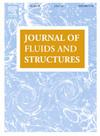Performance study of Coriolis mass flowmeter for hydrogen two-phase flow measurement
IF 3.4
2区 工程技术
Q1 ENGINEERING, MECHANICAL
引用次数: 0
Abstract
To enhance the performance of Coriolis mass flowmeters (CMFs) in liquid hydrogen-gas hydrogen (LH2-GH2) two-phase flow, we developed a theoretical framework that integrates models of decoupling, finite sound speed, Castiglione's second law, and forced vibration response. This framework was implemented numerically in MATLAB to analyze key parameters, including tube vibration amplitude, measurement error, system quality factor, and the energy dissipation ratio due to tube oscillation and two-phase flow. We first validated the effectiveness of the calculation framework in predicting structural frequencies and displacements using ANSYS. The validated framework was then employed to solve and compare the performance of CMFs under LH2-GH2 and water-air conditions across a range of temperatures, emphasizing the challenges posed by the low viscosity, low density, and high compressibility of LH2. Finally, we investigated the effects of driving force amplitude, tube wall thickness, and tube diameter, proposing strategies to optimize CMF functionality under LH2-GH2 conditions. This research addresses gaps in understanding the impact of LH2-GH2 on CMF performance and introduces a damping model applicable to tubes of arbitrary shape under two-phase flow. Our findings highlight the unique characteristics of CMF operation in LH2-GH2 and lay the groundwork for future technical advancements in this area.
用于氢两相流测量的科氏质量流量计性能研究
为了提高科里奥利质量流量计(CMFs)在液氢-气氢(LH2-GH2)两相流中的性能,我们建立了一个理论框架,该框架集成了解耦、有限声速、Castiglione第二定律和强迫振动响应模型。在MATLAB中对该框架进行了数值实现,分析了关键参数,包括管振动幅值、测量误差、系统质量因子以及管振动和两相流引起的能量耗散比。我们首先利用ANSYS验证了计算框架在预测结构频率和位移方面的有效性。然后使用验证的框架来解决并比较CMFs在LH2- gh2和水-空气条件下在一定温度范围内的性能,强调LH2的低粘度、低密度和高压缩性带来的挑战。最后,我们研究了驱动力振幅、管壁厚度和管径对CMF功能的影响,并提出了优化LH2-GH2条件下CMF功能的策略。本研究解决了在理解LH2-GH2对CMF性能影响方面的空白,并引入了一种适用于两相流下任意形状管的阻尼模型。我们的研究结果突出了LH2-GH2中CMF操作的独特特征,并为该领域未来的技术进步奠定了基础。
本文章由计算机程序翻译,如有差异,请以英文原文为准。
求助全文
约1分钟内获得全文
求助全文
来源期刊

Journal of Fluids and Structures
工程技术-工程:机械
CiteScore
6.90
自引率
8.30%
发文量
173
审稿时长
65 days
期刊介绍:
The Journal of Fluids and Structures serves as a focal point and a forum for the exchange of ideas, for the many kinds of specialists and practitioners concerned with fluid–structure interactions and the dynamics of systems related thereto, in any field. One of its aims is to foster the cross–fertilization of ideas, methods and techniques in the various disciplines involved.
The journal publishes papers that present original and significant contributions on all aspects of the mechanical interactions between fluids and solids, regardless of scale.
 求助内容:
求助内容: 应助结果提醒方式:
应助结果提醒方式:


